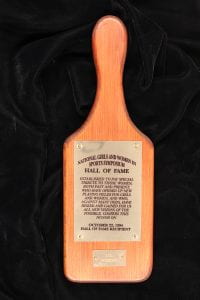Post Author: Jacob Houser

“No person in the United States shall, on the basis of sex, be excluded from participation in, be denied the benefits of, or be subjected to discrimination under any education program or activity receiving Federal financial assistance.” (Ware, 3)
These 37 words make up Title IX of the Education Amendments Act of 1972. According to Susan Ware, the short piece of legislation kept a low profile while making its way through Congress, to the joy of women’s educational equality supporters (Ware, 3). As shown in earlier posts, women’s sports were still lagging far behind men’s sports in financial support and ability to compete. Few predicted that collegiate athletics programs would be the main beneficiary of the bill. This was because athletics programs did not receive federal funding, making them seemingly untouched by the new law. In the 1971 debates and hearings, there was hardly any mention of athletics. After both the Senate and the House reached an agreement on the bill, President Richard Nixon signed the bill into law on June 23, 1972 (Ware, 4).
Implementation of the law was very slow. Most schools did not comply until the late 1970s. Susan Ware wrote,
“Not until 1974 did the Department of Health, Education, and Welfare circulate draft regulations about areas covered by the law, and these were not finalized until 1975. Elementary schools were then given a one year grace period (high schools, colleges, and universities got three years) to survey their programs and develop strategies to address the problems uncovered. Not until 1979 did HEW promulgate its final guidelines telling schools what standards they would have to meet to show they were in compliance with the law” (Ware, 4).
The 1979 guidelines laid out a “three prong test” in which schools had three ways to become compliant with the new law. One way that a school could become compliant was to make participation opportunities for male and female athletes be proportionate to their general enrollment in the education institution (Ware, 6). In simple terms, this test meant that if the school was 65 percent female, then females would receive exactly 65 percent of the athletic opportunities. The second prong required that a school show that it had a history and a continuing practice of program expansion to meet interests and needs of women. The third prong required demonstration that the school’s programs “fully and effectively [accommodate]” the interests and abilities of the underrepresented sex (Ware, 6). The beauty of Title IX was that it was not concrete and allowed the schools to comply through multiple ways, leading to greater opportunities for the success in women’s sports.
Works Cited:
Plaque presented to Dr. Lee Morrison. October 22, 1994. Lee Morrison Papers, Special Collections, Carrier Library, James Madison University, Harrisonburg, Virginia.
Ware, Susan. Title IX: A Brief History with Documents. Boston: Bedford/ St. Martin’s, 2007.
